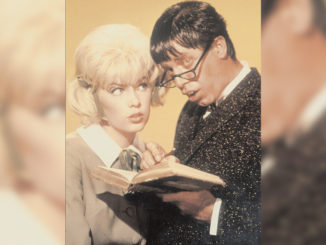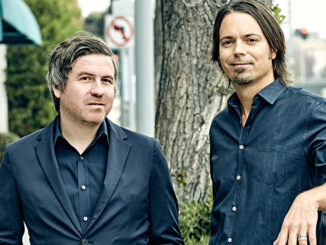
by Herbert Dow, ACE
My introduction to filmmaking began at the age of nine in Colusa, a small town in Northern California, which was used in 1952 as a location for the movie Member of the Wedding. My father was hired as the local casting agent and, as a relative, I became probably the most used child extra in the movie. When it played in the local theatre, it was as big an event as the annual Colusa County Prune Festival!
I still remember the editing because I was looking for my friends, the local sets and me. I was amazed that these little pieces of Colusa were spread throughout the movie and actually made it look as if we were in another part of the country. I seem to remember seeing it three days in a row. We only had one theatre and the movie played for a week. Colusa, on the Sacramento River, was used over the years to double for a southern town because of the architecture.
Fred Zinnemann, the director, once said in an interview that Wedding was his personal favorite of all his films, and he made a few of the world’s favorite movies: High Noon, From Here to Eternity, The Sundowners, The Nun’s Story, Oklahoma, The Old Man and the Sea, A Man for all Seasons, The Day of the Jackal and Julia, among others.
Even more impressive are the credits for the editor, William Lyon, who edited 99 movies beginning in 1935 with The Three Stooges in Restless Knights. His films include The Jolson Story (Oscar nomination), Death of a Salesman, From Here to Eternity (both he and Zinnemann won Oscars), The Caine Mutiny (Oscar nomination), The Long Grey Line, Cowboy (Oscar nomination), Picnic (Oscar), Raisin in the Sun, Barefoot in the Park (Oscar nomination), The Secret of Santa Vittoria (Oscar nomination) and even Gidget. An amazing editing career!
This movie is a slice of Americana, a mood piece and a coming-of-age story with some of the most emotional performances ever seen on screen.
Member of the Wedding is a film version of the Carson McCullers novel and play (The Heart is a Lonely Hunter), with the same cast that appeared on Broadway. It is a touching character piece about the relationships of whites and blacks in the American South. A seemingly simple story of a young girl’s attempt at growing up, this film takes us on a tumultuous and painful journey through the mind of Frankie, a 12-year-old girl played by Julie Harris in her late 20s (Oscar-nominated for Best Actress for this role). Frankie’s disapproval of herself borders on self-hatred and she feels painfully alienated as her brother leaves to get married and her black maid, Bernice (brilliantly played by Ethel Waters) is all too aware of the reasons for her sense of aloneness. Trying to bring some meaning to Frankie’s anguished life, Bernice recounts a moment in life when she was completely in love with a man named Luddie. They married, but he died young. The camera never once moves away from her face, looking into her own flashback like in a trance. As her face fills the screen and she continues telling her tale of how she looked for pieces of Luddie in other men (“but they were the wrong pieces”), tears stream down her face. I found myself weeping with her and wonder why she was overlooked by the Academy.
This movie is a slice of Americana, a mood piece and a coming-of-age story with some of the most emotional performances ever seen on screen. After all these years, I can still remember the scene with Frankie, Bernice and neighbor John Henry (Brandon De Wilde in a genius child-actor performance) sitting in the growing darkness in the kitchen singing “The Eye of the Sparrow.”
The film left such an impression of the sadness of growing up; it was one of the very few movies that showed the gap between children and adults in the world. There was even a hint of Lolita in a scene where a soldier tries to kiss Frankie when she is running away from home.
Member of the Wedding was my first view of a movie from the shooting to the screen and it brings back memories of that whole time in my life. Watching it made me aware for the first time of the art of editing. Perhaps my editing career got its start back in that small town theatre…and not from marrying a film editor’s daughter, as I’ve always believed.





